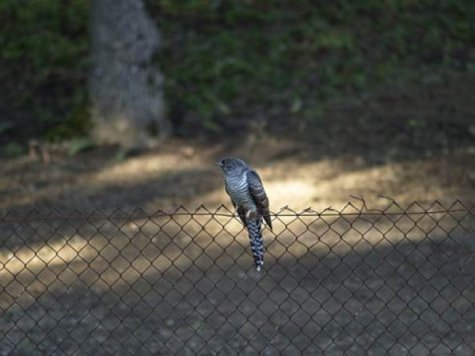Young cuckoos roaming about
Photo Olav Parkson
Translation Liis
Juvenile hatched this summer on net fencing
Cuckoo Kägu Cuculus canorus
We don’t often meet cuckoos with their secretive way of life. During the autumn migration encounters are most likely. The exterior of cuckoos is characterised by long and pointed wings, a long tail with a rounded tip and the crosswise striped underparts – leaves an impression of a bird of prey at first glance. But the beak of the bird reveals that it is not a bird of prey. The plumage of juveniles is grey, the back slightly more brown and the iris reddish brown. Body length 30 centimetres, wing span up to twice the body length, weight around a hundred grams.
The life mode of cuckoos is to be a parasite in the nest of passerines: wagtail, meadow pipit, robin, dunnock, grey flycatcher…: the stepparents of the cuckoo chick must be insectivores. Investigations confirm that the female cuckoo, who lays more than 10 eggs in spring, searches for nests of her own stepparents among the bird species – thus she is sure that they manage to raise a cuckoo chick in their nest.
There are 30 000 to 50 000 pairs of cuckoos in Estonia, and all of us who can do sums can find the number of necessary passerine stepparent nests. All is not easy in bird life.









